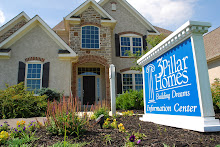One of the most exciting and dynamic periods in the construction of a new home is the structural framing stage. It is the time when two-dimensional plans take on three-dimensional shape. As floors, walls, and a roof rise from the ground, the owners can envision the finished home and walk through its spaces.
As a professional builder, we are constantly looking for superior ways to build. The framing stage affords several opportunities to construct a home faster and within the budget without sacrificing the home's quality. In fact, the new techniques for framing actually improve a home's structural integrity, performance, and durability. Here are just a few of the methods and materials we consider for this stage of construction:
Advanced framing. In essence, advanced framing techniques allow us to remove excess and unnecessary structural components, such as extra wall studs and blocking. Elements which add nothing to the stability or ultimate performance of the house are the byproducts of outdated framing methods that linger in our industry, costing money without additional value. By reducing the amount of lumber we use in a home's structural frame, we lower both costs and waste. Because each length of lumber is a preplanned piece of a larger puzzle, there's less chance that we'll make unnecessary cuts and create unusable scrap. Because it supports increased quality and reduced waste, advanced framing is a tenet of green building practices and programs around the country.
Engineered lumber. Like advanced framing, engineered lumber uses less wood to build a better structure. Engineered lumber is made from strands or chips of wood which are reassembled with glue, heat and pressure into large beams and I-shaped sections. Tough and stable, engineered lumber framing components allow us to span the longer distances common in popular open floor plans and high ceilings. Because of their strength, we can use fewer lengths of engineered lumber. Thus, the quality of the house is increased simultaneously with a reduction in labor costs. Because these products are frequently made from smaller and sustainably grown timber resources, instead of old-growth trees, they are more environmentally attractive, as well.
Panels and trusses. For decades, quality builders have used roof trusses (premade sections of the roof's frame) to build houses better and faster. The same technology is now increasingly applied to floors and walls, with similar benefits. A house framed with panels and trusses is a truly amazing sight, seeming to spring into existence overnight. Furthermore, as skilled framing labor becomes more difficult and expensive to find, factory-built and quality-controlled panels and trusses allow us to create unique spaces and forms almost impossible with traditional framing techniques. Finally, even more than advanced framing and engineered lumber, these components reduce our waste stream significantly and leave a clean job site during what can be a very messy stage of construction.
Despite appearances, homes today are built quite differently than they were even a decade ago. Nowhere is that more evident than in the various advanced, engineered, and factory-built framing components and techniques now at our command. These systems allow us to build more efficiently and to a higher level of quality than traditional "stick" framing, delivering new homes that perform as promised to meet the needs and expectations of our owners.
skip to main |
skip to sidebar
We are a new home builder offering custom home plans to meet your lifestyle and budget. Whether you are in the market for a new, semi custom or custom home, we can help you achieve your dream.
3 Pillar Homes
5710 Delano Ave
Lewis Center, OH 43035
(740) 548-8599




